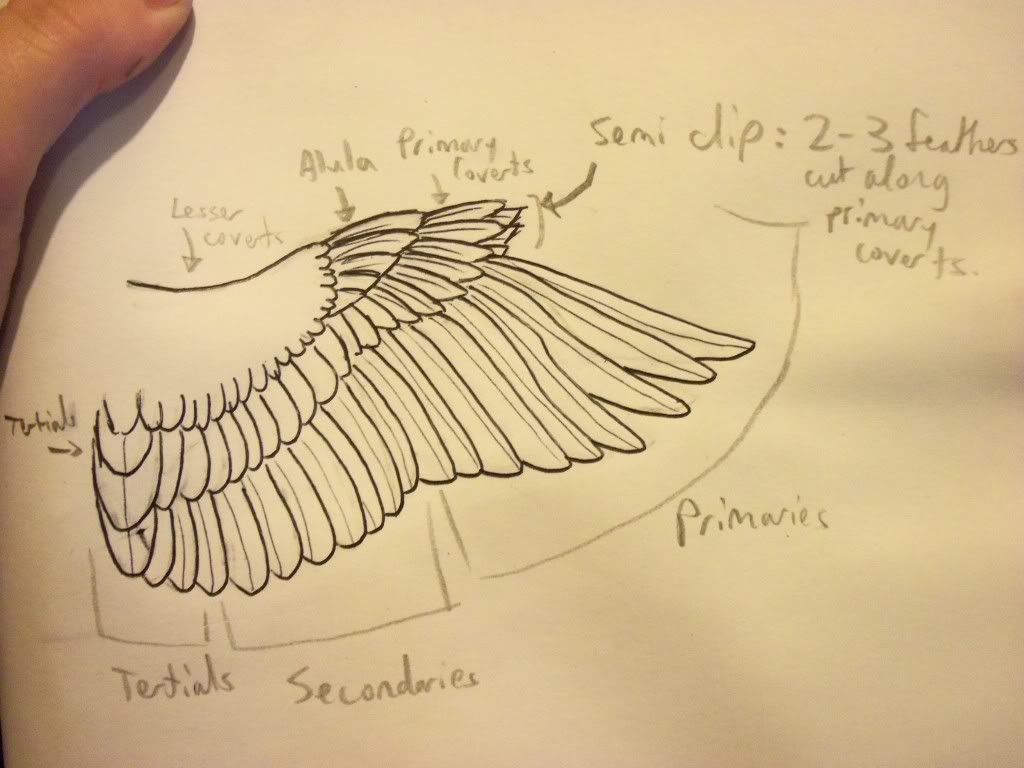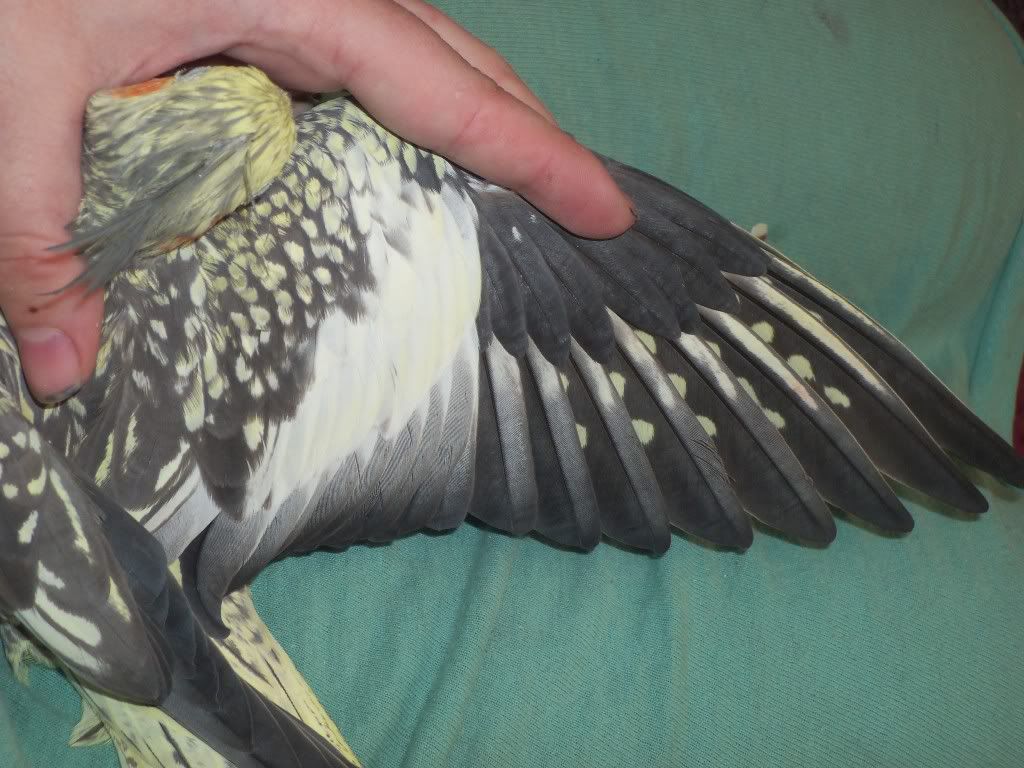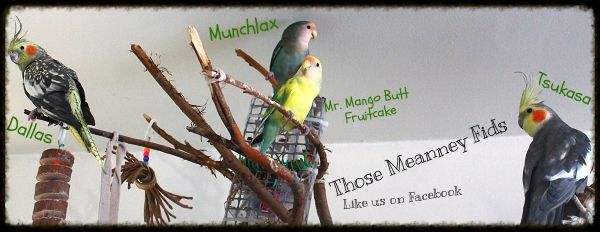Post by Casey on Apr 25, 2011 12:20:55 GMT -8
Wing Clipping is a controversial issue. Let me state that on this forum there will be NO arguments on clipping or not clipping. To each their own, and it is up to the bird owner themselves on whether or not they want to clip or not.
Anyways, wing clipping. Proper wing clipping should enable to bird to glide or flap gently down to the floor or from place to place. Clipping is meant to slow a bird in and inhibit lift. A clipped bird may still fly away outside so do not bring a clipped bird outdoors without a harness. All it takes is one gust of wind or a slight breeze and the bird is gone.
A full clip really diminishes flight. They can gently glide or flap down instead of dropping like a rock or flying high up and fast. A full clip invovles clipping most of the primaries (number varies on species).
A semi clip involves clipping 2-3 flights from the primaries. This clip allows full flight, but slows the bird down so it can not attain the speeds they can.
This is a semi clip

Clipping should be done to BOTH wings as clipping only one wing will unbalance the bird and can result in injury from crashing. Do not clip the secondaries. This clip makes the bird drop like a rock and they can seriously harm themselves. The secondaries provide support. Without them, the bird has no support and falls. Clip 4-6 flights for a full clip in cockatiels. Four flights should be enough for larger birds. To be on the safe side, always trim less first.
When clipping, use the wing coverts as a guide. They should line up to the coverts on the top of the wing (primary coverts)
Images below are on how to clip.
This is an unclipped wing

and this is a clipped wing (5 flights)

Its also very important to allow baby birds to fledge before clipping. Meaning, let the babies learn to fly before clipping. If not allowed to fledge, these birds grow up prone to injuries and are not as muscled as fledged birds.
If there is any blood feathers, post pone the wing clipping until the blood feather is grown in. NEVER clip a blood feather!
Anyways, wing clipping. Proper wing clipping should enable to bird to glide or flap gently down to the floor or from place to place. Clipping is meant to slow a bird in and inhibit lift. A clipped bird may still fly away outside so do not bring a clipped bird outdoors without a harness. All it takes is one gust of wind or a slight breeze and the bird is gone.
A full clip really diminishes flight. They can gently glide or flap down instead of dropping like a rock or flying high up and fast. A full clip invovles clipping most of the primaries (number varies on species).
A semi clip involves clipping 2-3 flights from the primaries. This clip allows full flight, but slows the bird down so it can not attain the speeds they can.
This is a semi clip

Clipping should be done to BOTH wings as clipping only one wing will unbalance the bird and can result in injury from crashing. Do not clip the secondaries. This clip makes the bird drop like a rock and they can seriously harm themselves. The secondaries provide support. Without them, the bird has no support and falls. Clip 4-6 flights for a full clip in cockatiels. Four flights should be enough for larger birds. To be on the safe side, always trim less first.
When clipping, use the wing coverts as a guide. They should line up to the coverts on the top of the wing (primary coverts)
Images below are on how to clip.
This is an unclipped wing

and this is a clipped wing (5 flights)

Its also very important to allow baby birds to fledge before clipping. Meaning, let the babies learn to fly before clipping. If not allowed to fledge, these birds grow up prone to injuries and are not as muscled as fledged birds.
If there is any blood feathers, post pone the wing clipping until the blood feather is grown in. NEVER clip a blood feather!


